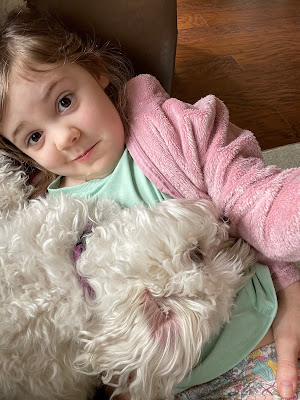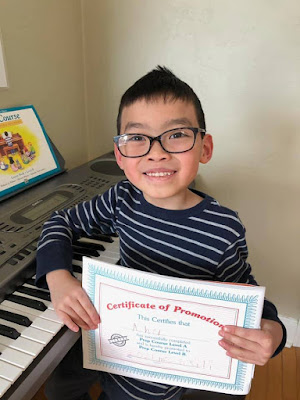Practice
My family is still virtual everything, for the time being. Being home as much as we are, the hours slip like sand through my fingers. What's fun about it is the opendedness -- sure we can watch a movie at 7:30 am! What’s maddening about it is the open endedness -- wait we’ve finished an entire movie and it’s only 9 in the morning?
 |
| Hey, sometimes I don't accomplish my goal until 11:55 pm, but that counts! |
This practice of setting small goals has been very fulfilling, and I look for ways to set my daughters up for these small victories, too. One way I’ve discovered (and hand to heaven this isn’t because I’m a music educator) is through their instrument practice. Hear me out:
One of the keys to maximizing benefits of a music education is regular practice. What is practice like at your house? Often it’s another item to check off on a kid’s list of things to do before playtime, screen time or friend time. That’s what it was for me when I was a kid anyway, and there’s nothing wrong with making practice a box to check before moving on to other activities. However, I invite you to reframe the way you think about your child’s music practice: practicing an instrument is a way for kids to learn about self care. By carving out time for a consistent practice, we tell our kids: You are important. You are worthy.
One day recently, during that insane time between homework, baths and bedtime when most parents (hi) experience major overwhelm, I sat at the piano and played a verse from Taylor Swift’s “Lover.” My daughter Grace stopped what she was doing, looked over my shoulder and started singing along. I loved this for so many reasons: (namely Grace’s seven year old voice is so pure and thanks to her kindermusik education her pitch is spot on) it shifted the mood from chaos to calm, it showed my daughters I have skills outside of slicing apples and folding laundry, and by sitting on that bench I reminded myself that I have skills outside of slicing apples and folding laundry, and further: over the course of my life I’ve shown up for myself in order to build these skills.
We shared a statistic from Kindermusik on our Instagram story this week, that 20% of children learn to play music, and 70% of adults wish they had. Of course, investing in our children’s musical education and encouraging practice is not about living vicariously through them (though for some of us, this is tempting:) By coming alongside our children as they build a musical practice, by holding time and space for them as they learn a new skill, we model what it looks like to invest our resources into something specific and worthy. We strive to teach them that showing up for themselves -- that putting themselves on the list in this very specific way to practice the skills of music -- will pay off for years to come. THAT is the habit we want to build. The beautiful music will follow.







Comments
Post a Comment